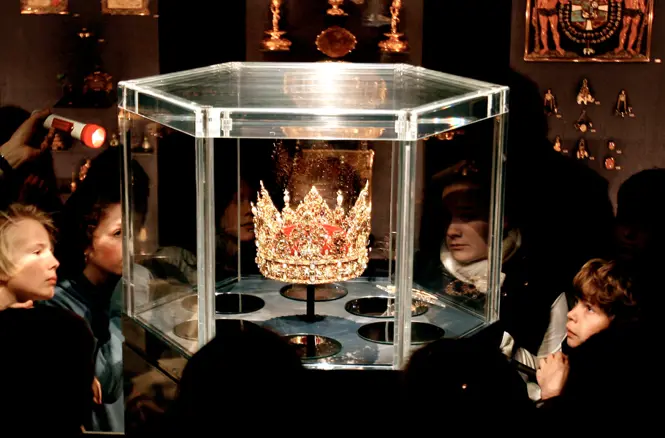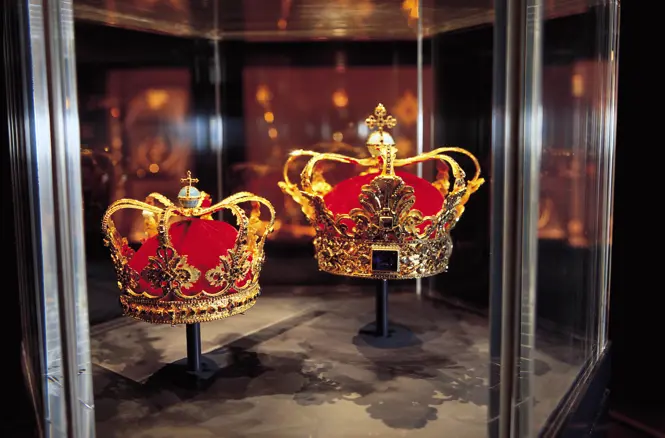
The crowns and associated regalia of the Danish kings and queens are exhibited at Rosenborg Castle.
The crown as a symbol of power and dignity goes back to Roman victory garland, known as a ¨corona¨. The crowns and associated regalia of the Danish kings and queens are exhibited at Rosenborg Castle.
Denmark’s oldest existing crown dates from 1596 and was used by Christian IV. Denmark's crown is Christian V’s crown, which was produced in 1670-71 for Denmark’s second absolute monarch. The crown has been worn by the absolute monarchs from Christian V to Christian VIII during the anointments, and is still used when it is laid on the monarch’s coffin during “castrum doloris”. In graphic form, the crown is part of the Danish Royal Coat of Arms and the national coat of arms.
The crown, which weighs more than two kilos, was created by the German goldsmith, Paul Kurtz, who worked in Copenhagen. The crown is made of gold and decorated with flat, table-cut stones. Its braces create a closed form inspired by the crown of the French king, Ludvig XIV, and symbolise the ruler’s absolute power, for which only God can hold the sovereign king accountable. The crown’s braces meet at the top in an orb.
Read more about the crown on the website of The Royal Danish Collection.
Today, the crown is used ceremonially under the so-called castrum doloris.
Castrum doloris, which in Latin means ¨pain’s bed¨ denotes the tradition in which a closed coffin is placed on a raised platform, a catafalque, and lies there for public viewing for some time. In Denmark, the custom, which goes back to papal burials in the 1300s, has been a part of the royal burial ceremony in Denmark since introduction of the absolute monarchy in 1660. In 1670, Frederik III was the first to lay in state in this manner; Frederik IX was the most recent in 1972. The castrum doloris is the only ceremony from the absolute monarchy that is still implemented in virtually unchanged form and the last ceremony in which the Danish crown jewels are still used, when they are laid on the coffin. During the monarch's castrum doloris, the three silver lions from Rosenborg Castle sit and watch over the coffin.
Christian V’s Crown at Rosenborg Palace
Rosenborg Palace is open for guided tours.

